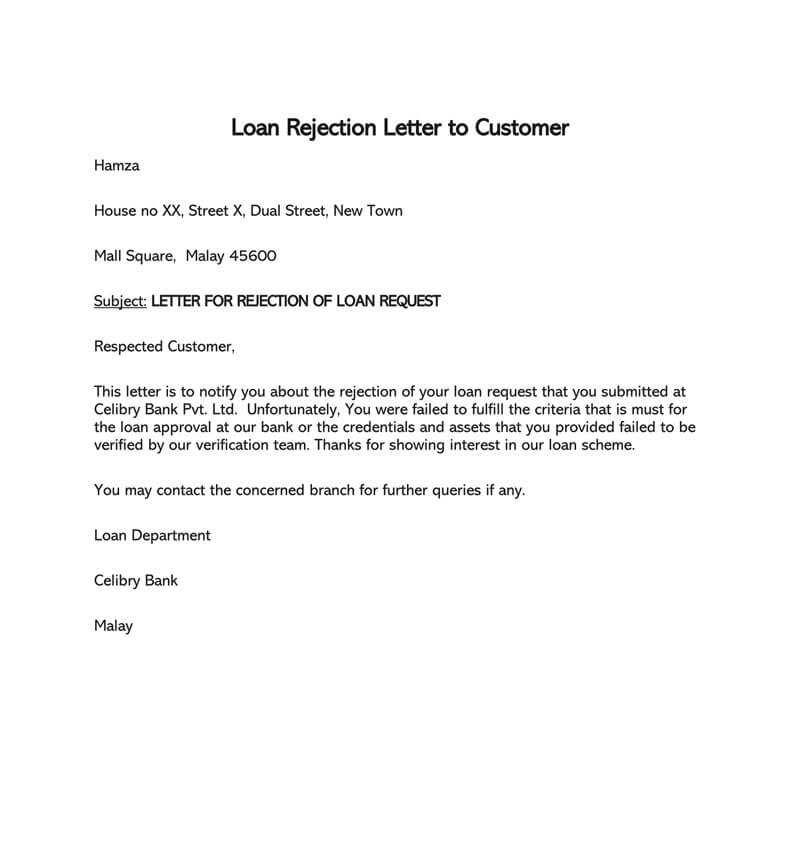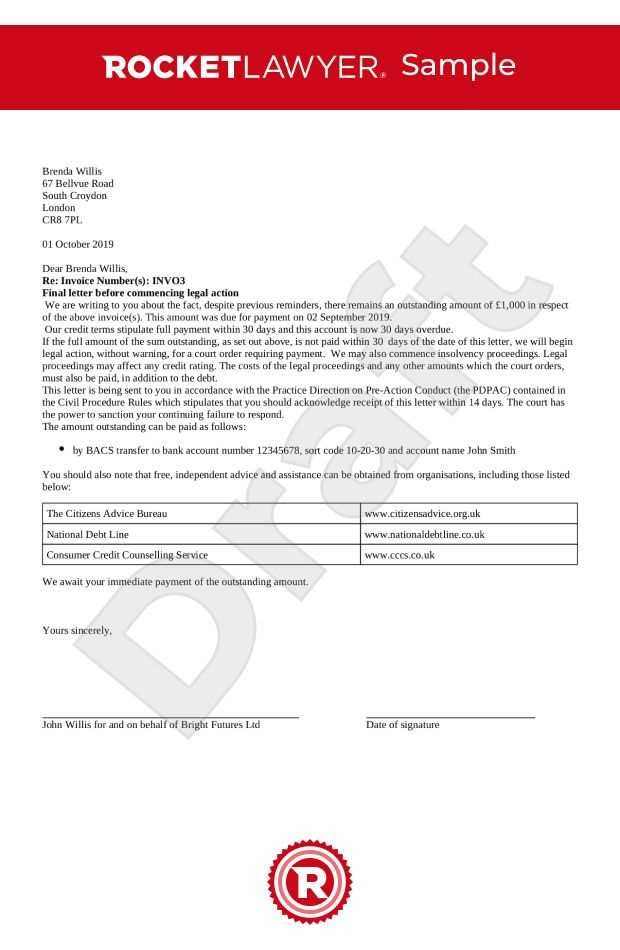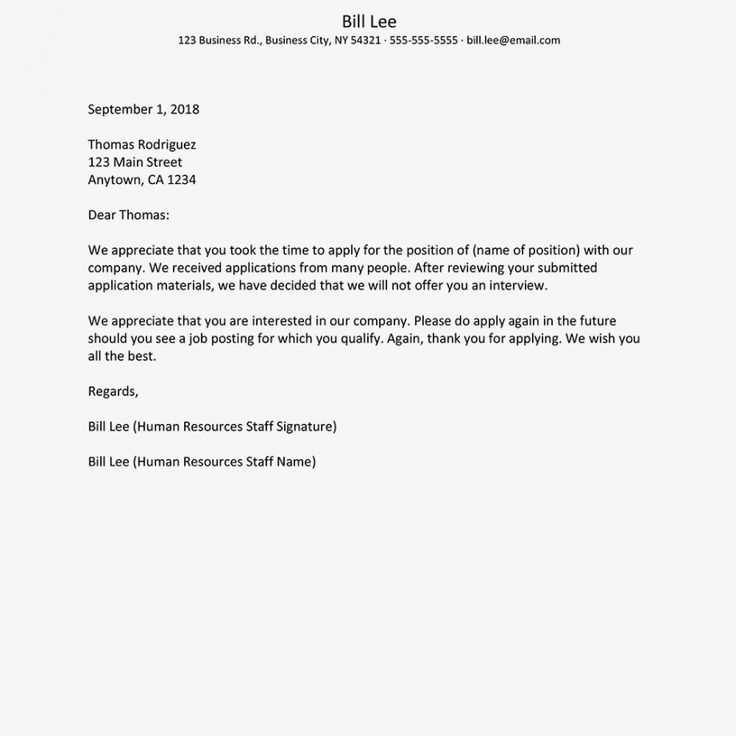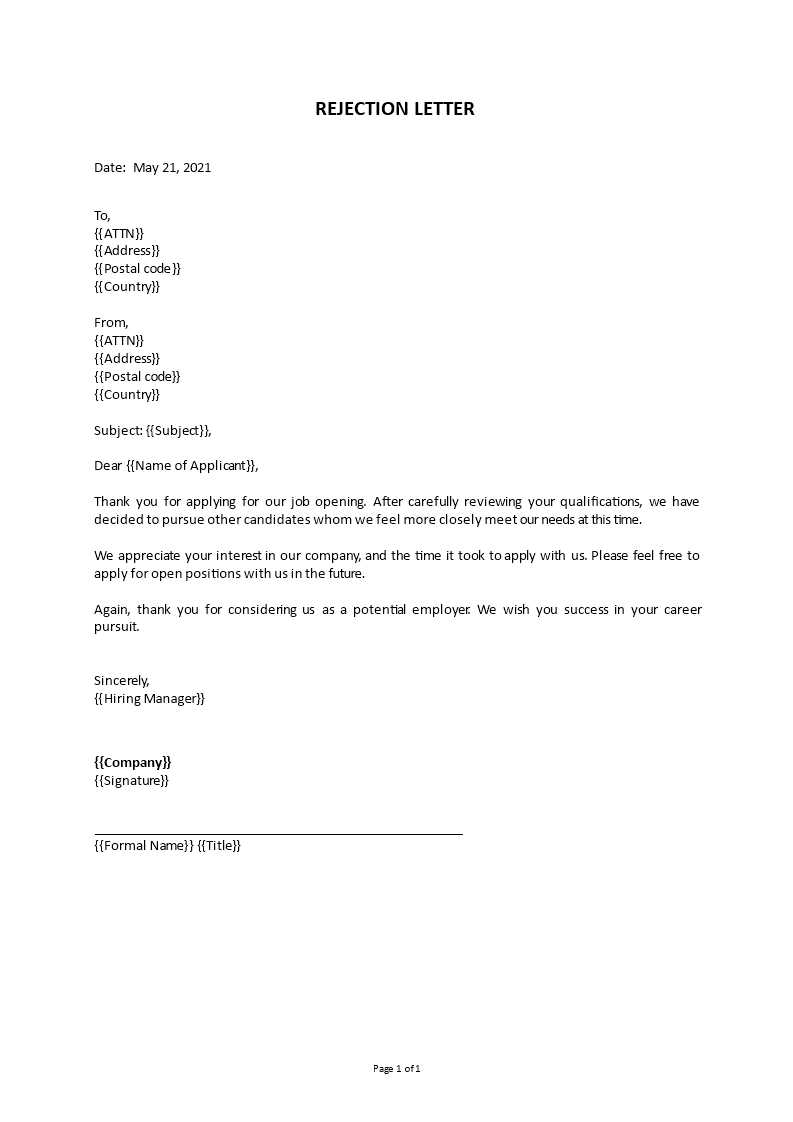Insurance Rejection Letter Template Guide

Receiving a decision that denies your request for coverage can be frustrating and challenging. When this happens, crafting a clear and respectful response is essential. Knowing how to address such situations properly helps maintain professionalism and strengthens the overall claims process.
In this guide, we’ll explore how to write a formal response when faced with a denied claim. Whether you are appealing or simply acknowledging the decision, understanding the structure of your response is crucial. By following a few key steps, you can ensure that your communication is concise, polite, and effective.
Crafting a thoughtful response demonstrates that you understand the process and are taking the necessary steps to resolve any misunderstandings or miscommunications that may have led to the denial. Effective communication in these cases can often lead to positive outcomes or at least clarify the situation for future reference.
Insurance Rejection Letter Template

When a claim is denied, it is important to respond with a well-structured document that clearly conveys your position. A properly written response can help clarify misunderstandings and set the stage for further action, whether it’s seeking an explanation or starting the appeal process. Below is a basic outline for crafting a formal reply to a claim decision, which includes all necessary details for a professional approach.
| Element | Description |
|---|---|
| Sender’s Information | Include your full name, address, contact details, and the date of writing. |
| Recipient’s Information | Provide the details of the person or company to whom the response is addressed, including name and address. |
| Claim Details | Reference the claim number, policy number, and any relevant dates that are necessary to identify the claim. |
| Reason for Denial | Briefly explain the reason given for the denial, if provided. |
| Next Steps | Describe any action you plan to take or inquire about further clarification or an appeal process. |
| Closing Remarks | End with a polite expression, showing willingness to cooperate and seek resolution. |
Having a clear structure when replying to a claim decision helps ensure that all necessary information is included and can be easily understood by the recipient. This can facilitate a more efficient response and help clarify any misunderstandings in the process.
Reasons for Insurance Claim Denial
Understanding the possible causes for a claim being denied is crucial for effectively addressing the situation. Several factors may contribute to a negative decision, and each case may involve a different set of circumstances. Below are common reasons why a claim could be rejected.
Common Denial Reasons
- Policy Exclusions: Many policies have exclusions that prevent certain claims from being covered. It’s important to thoroughly review the terms before filing a claim.
- Insufficient Documentation: Claims without proper supporting documents, such as medical records or receipts, are often rejected.
- Missed Deadlines: Late submission of a claim or failing to meet deadlines can lead to its denial.
- Pre-existing Conditions: Claims related to pre-existing conditions may not be eligible for coverage, depending on the policy.
- Non-compliance with Terms: Not following specific policy terms or procedures can result in a denied claim.
Other Factors Affecting Claim Denial
- Misrepresentation: Providing inaccurate or misleading information when filing the claim can result in a rejection.
- Policy Lapse: Claims made after the policy has expired or lapsed are generally not accepted.
- Inadequate Coverage: If the policy does not cover the specific situation or amount needed, the claim may be denied.
Being aware of these potential causes helps to avoid mistakes and ensure all requirements are met when submitting a claim. In some cases, addressing these issues may lead to a more favorable outcome or a smoother appeal process.
How to Structure a Rejection Letter
When responding to a negative decision, it is essential to structure your message clearly and professionally. A well-organized response helps ensure that your position is understood and presents you in a positive light, even when conveying an unfavorable outcome. Below are key steps to follow when writing such a communication.
Key Components of a Formal Response
Start by including the necessary contact information, such as your details and the recipient’s, at the top of the message. This ensures the letter reaches the correct individual and provides a clear reference to the claim being addressed.
- Salutation: Use a polite greeting, addressing the recipient directly.
- Introduction: State the purpose of your message in a concise manner. Mention the claim number or other identifying information for easy reference.
- Body: Explain the reasons behind the decision. Be specific, transparent, and objective, avoiding emotional language.
- Conclusion: Conclude the message by expressing willingness to discuss the matter further, if necessary. Provide instructions for any next steps or available alternatives.
Important Tips for Clear Communication
- Be Professional: Keep the tone respectful and neutral throughout, even if the decision is not favorable.
- Avoid Over-explanation: Keep your response concise and to the point, without unnecessary detail.
- Clarity: Make sure your message is easy to understand by avoiding jargon and overly technical terms.
By following these guidelines, you can craft a formal and effective response that addresses the situation appropriately and fosters a constructive outcome.
Key Elements to Include in the Letter
When crafting a formal response to a denied request, it is important to include specific details to ensure the recipient fully understands the reasoning behind the decision. A clear and organized structure not only helps clarify your position but also shows professionalism. Below are the essential components that should be included in such a document.
- Identification Information: Include the claim or reference number, along with any policy details, to help the recipient quickly identify the specific case.
- Reason for the Decision: Clearly outline the grounds for the decision. Be transparent and specific about why the request was not approved.
- Relevant Dates: Mention any important dates, such as when the claim was submitted, when the decision was made, or when a policy lapsed.
- Next Steps: Offer information on what the recipient can do next, whether it’s appealing the decision, submitting additional documentation, or contacting customer support.
- Contact Information: Provide details for the recipient to reach out for further clarification or assistance, including phone numbers or email addresses.
Including these elements ensures that your response is comprehensive and provides clear guidance to the recipient, reducing confusion and enabling more effective communication moving forward.
Tips for Writing a Professional Response
When delivering a decision that may be disappointing, it’s important to communicate in a way that maintains professionalism and clarity. A well-written message not only helps explain the reasoning behind the decision but also ensures that the recipient feels respected. Below are several tips to keep in mind when drafting your response.
- Maintain a Neutral Tone: Avoid emotional language or tone. Focus on presenting the facts clearly and objectively.
- Be Concise: Keep the message short and to the point. Avoid unnecessary details that may confuse the reader.
- Express Understanding: Acknowledge any frustration the recipient may feel, but remain firm in the explanation.
- Offer Assistance: Provide guidance on how the recipient can proceed, whether through appeal or providing additional information.
- Double-check Your Writing: Review your message for grammar and clarity to ensure it is professional and error-free.
By following these guidelines, you can create a thoughtful response that is both professional and clear, helping to address the recipient’s concerns while maintaining your credibility.
Common Mistakes to Avoid in Rejection Letters
When drafting a message to inform someone of a negative decision, it’s essential to avoid certain pitfalls that could affect the professionalism or clarity of your communication. These mistakes can lead to misunderstandings or damage to the relationship. Below are some of the most common errors to watch out for when crafting such responses.
Lack of Clarity and Specificity

One of the biggest mistakes is not being clear or specific about the reason for the decision. Avoid vague language that could leave the recipient confused or uncertain about the reasoning behind the refusal.
- Provide clear, detailed explanations for why the request cannot be fulfilled.
- Ensure that the recipient understands the decision without needing further clarification.
Using an Unprofessional Tone
While it’s important to convey the decision, it’s equally important to do so in a respectful and professional manner. Avoid language that may seem dismissive, harsh, or overly casual.
- Maintain a formal and polite tone throughout.
- Avoid using phrases that could be perceived as rude or indifferent.
By being mindful of these common mistakes, you can ensure your communication remains clear, respectful, and effective, maintaining professionalism in difficult situations.
How to Handle a Denied Claim
Receiving a negative decision regarding a request can be frustrating and confusing. However, it’s important to approach the situation methodically and professionally to ensure that all options are explored. Understanding the next steps can help you navigate the process more effectively. Below are some key actions to take after a claim has been denied.
Review the Decision Carefully

Before taking any further steps, carefully examine the reasoning behind the denial. Ensure that all the details provided are accurate and fully understood. This review will help you identify whether the decision was made based on incomplete or incorrect information.
- Check for any misunderstandings or missing information.
- Understand the exact reasons for the refusal to identify potential grounds for an appeal.
Consider Appeal Options
If you believe the decision was incorrect or based on an error, investigate the appeal process. Many organizations offer the opportunity to dispute a decision, either by providing additional evidence or addressing misunderstandings directly.
- Research the appeal procedure and any deadlines involved.
- Prepare any additional documentation or clarification needed to support your case.
By following these steps, you can better understand the situation and take appropriate action, whether it’s disputing the decision or seeking alternative solutions.